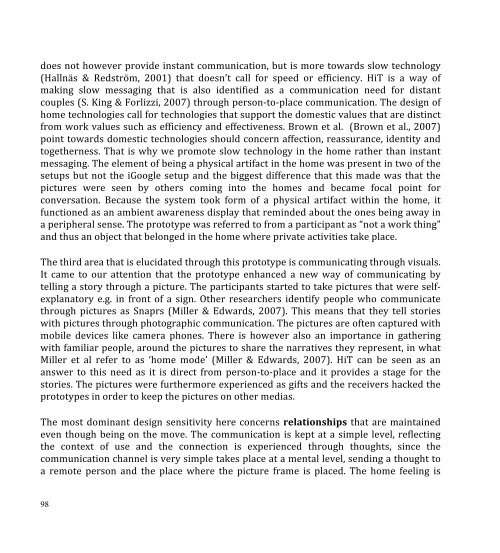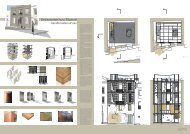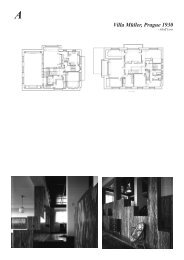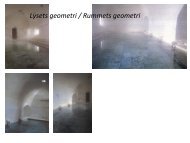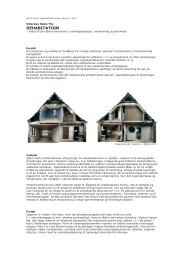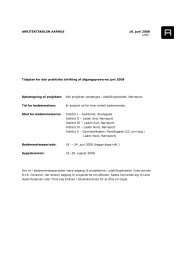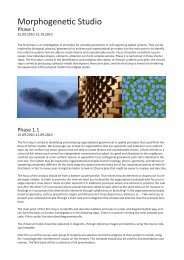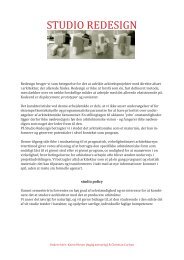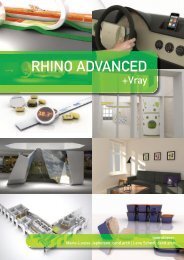-Tactics and Concepts for Highly Mobile People
-Tactics and Concepts for Highly Mobile People
-Tactics and Concepts for Highly Mobile People
Create successful ePaper yourself
Turn your PDF publications into a flip-book with our unique Google optimized e-Paper software.
does not however provide instant communication, but is more towards slow technology<br />
(Hallnäs & Redström, 2001) that doesn’t call <strong>for</strong> speed or efficiency. HiT is a way of<br />
making slow messaging that is also identified as a communication need <strong>for</strong> distant<br />
couples (S. King & Forlizzi, 2007) through person-‐to-‐place communication. The design of<br />
home technologies call <strong>for</strong> technologies that support the domestic values that are distinct<br />
from work values such as efficiency <strong>and</strong> effectiveness. Brown et al. (Brown et al., 2007)<br />
point towards domestic technologies should concern affection, reassurance, identity <strong>and</strong><br />
togetherness. That is why we promote slow technology in the home rather than instant<br />
messaging. The element of being a physical artifact in the home was present in two of the<br />
setups but not the iGoogle setup <strong>and</strong> the biggest difference that this made was that the<br />
pictures were seen by others coming into the homes <strong>and</strong> became focal point <strong>for</strong><br />
conversation. Because the system took <strong>for</strong>m of a physical artifact within the home, it<br />
functioned as an ambient awareness display that reminded about the ones being away in<br />
a peripheral sense. The prototype was referred to from a participant as “not a work thing”<br />
<strong>and</strong> thus an object that belonged in the home where private activities take place.<br />
The third area that is elucidated through this prototype is communicating through visuals.<br />
It came to our attention that the prototype enhanced a new way of communicating by<br />
telling a story through a picture. The participants started to take pictures that were self-‐<br />
explanatory e.g. in front of a sign. Other researchers identify people who communicate<br />
through pictures as Snaprs (Miller & Edwards, 2007). This means that they tell stories<br />
with pictures through photographic communication. The pictures are often captured with<br />
mobile devices like camera phones. There is however also an importance in gathering<br />
with familiar people, around the pictures to share the narratives they represent, in what<br />
Miller et al refer to as ‘home mode’ (Miller & Edwards, 2007). HiT can be seen as an<br />
answer to this need as it is direct from person-‐to-‐place <strong>and</strong> it provides a stage <strong>for</strong> the<br />
stories. The pictures were furthermore experienced as gifts <strong>and</strong> the receivers hacked the<br />
prototypes in order to keep the pictures on other medias.<br />
The most dominant design sensitivity here concerns relationships that are maintained<br />
even though being on the move. The communication is kept at a simple level, reflecting<br />
the context of use <strong>and</strong> the connection is experienced through thoughts, since the<br />
communication channel is very simple takes place at a mental level, sending a thought to<br />
a remote person <strong>and</strong> the place where the picture frame is placed. The home feeling is<br />
98


